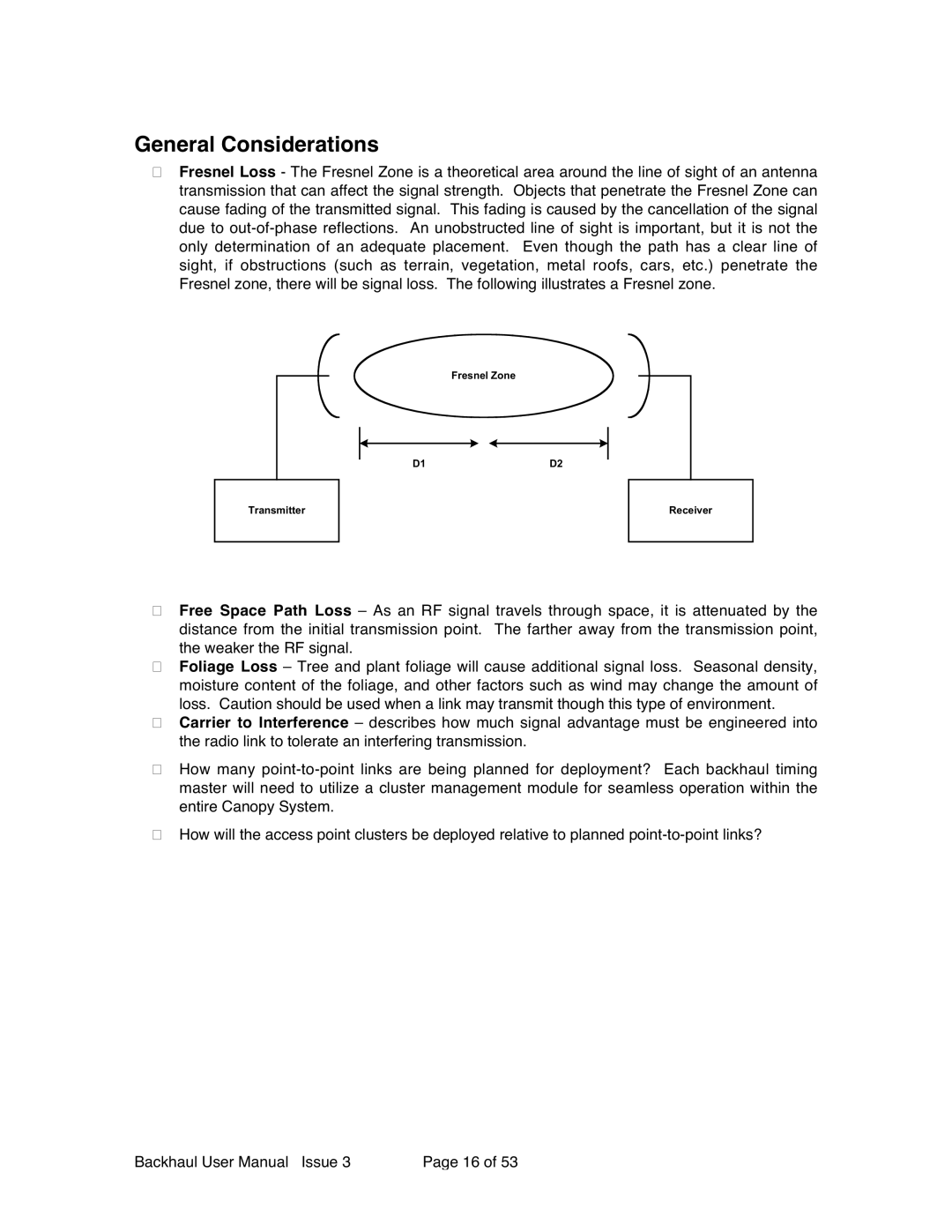
General Considerations
•Fresnel Loss - The Fresnel Zone is a theoretical area around the line of sight of an antenna transmission that can affect the signal strength. Objects that penetrate the Fresnel Zone can cause fading of the transmitted signal. This fading is caused by the cancellation of the signal due to
Fresnel Zone
D1D2
Transmitter
Receiver
•Free Space Path Loss – As an RF signal travels through space, it is attenuated by the distance from the initial transmission point. The farther away from the transmission point, the weaker the RF signal.
•Foliage Loss – Tree and plant foliage will cause additional signal loss. Seasonal density, moisture content of the foliage, and other factors such as wind may change the amount of loss. Caution should be used when a link may transmit though this type of environment.
•Carrier to Interference – describes how much signal advantage must be engineered into the radio link to tolerate an interfering transmission.
•How many
•How will the access point clusters be deployed relative to planned
Backhaul User Manual Issue 3 | Page 16 of 53 |
